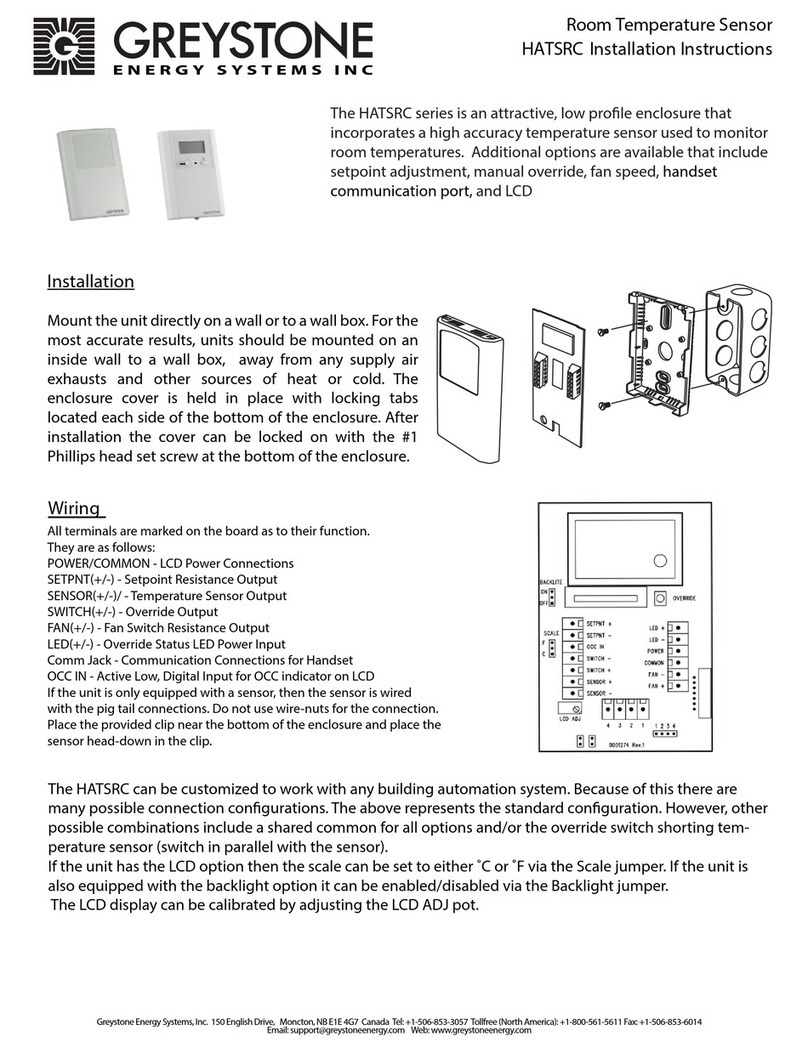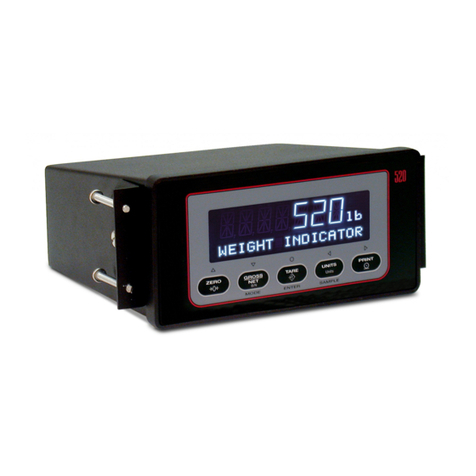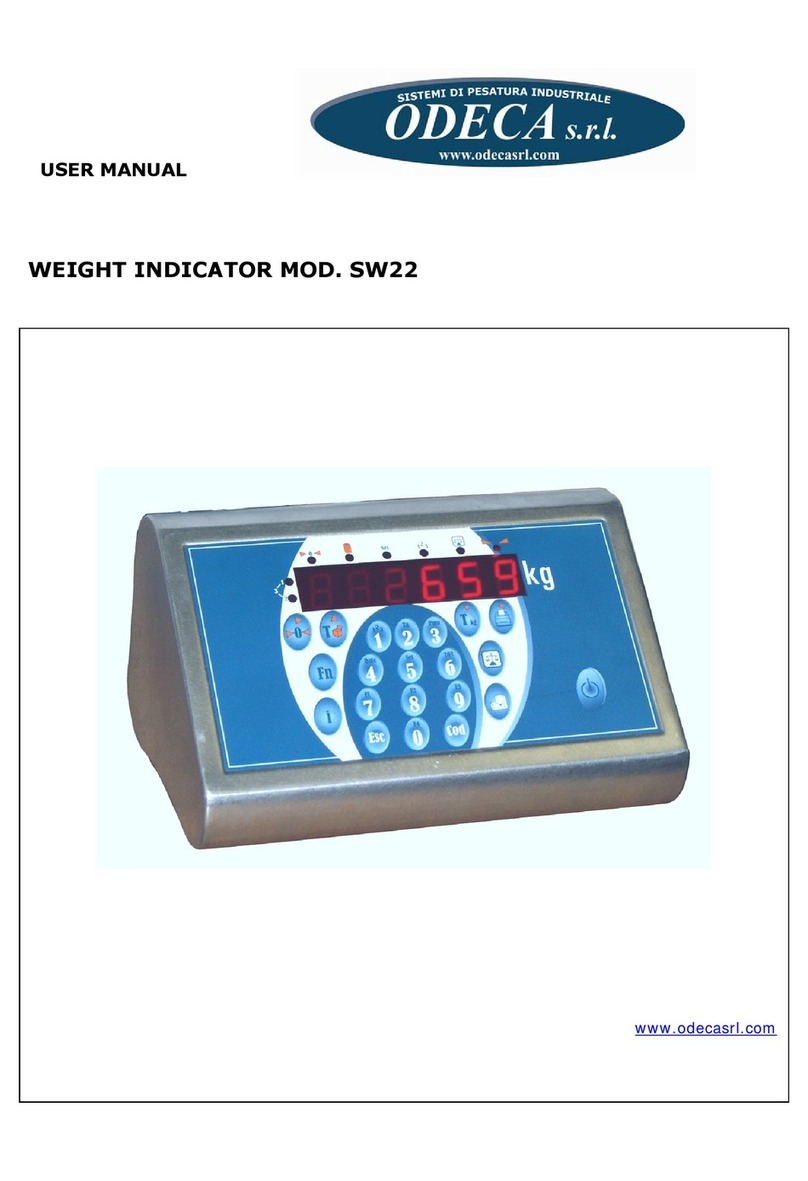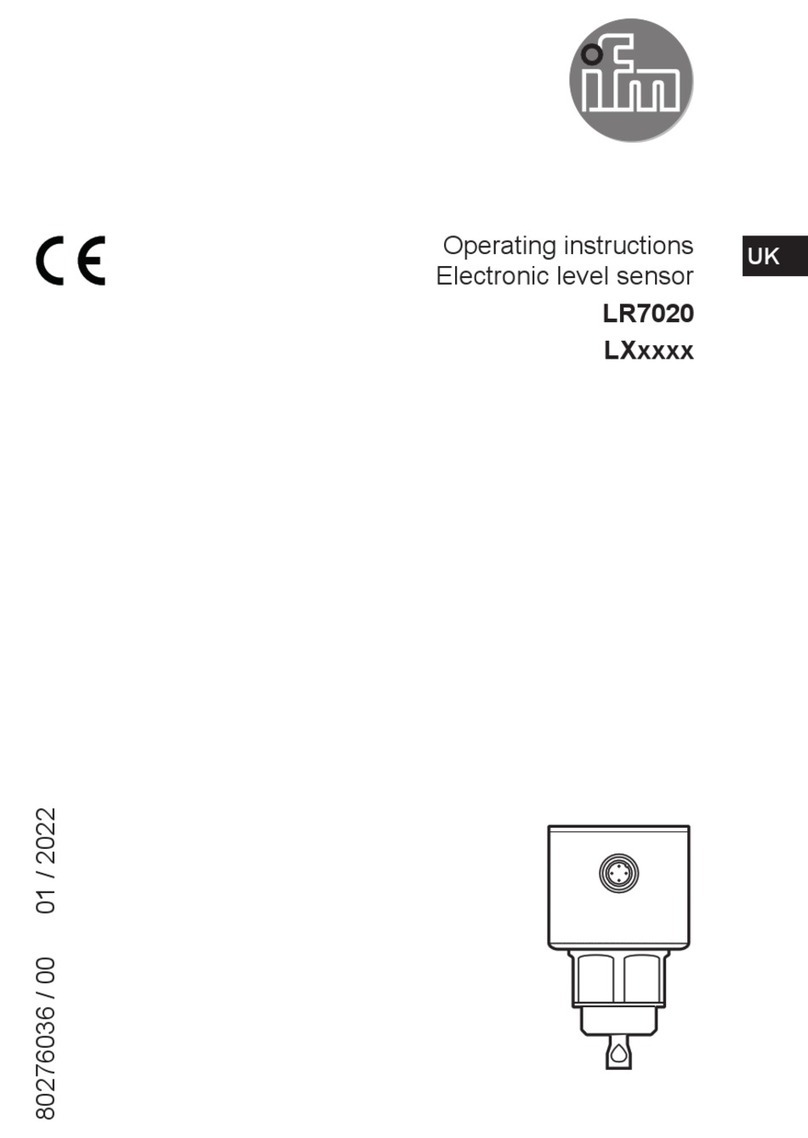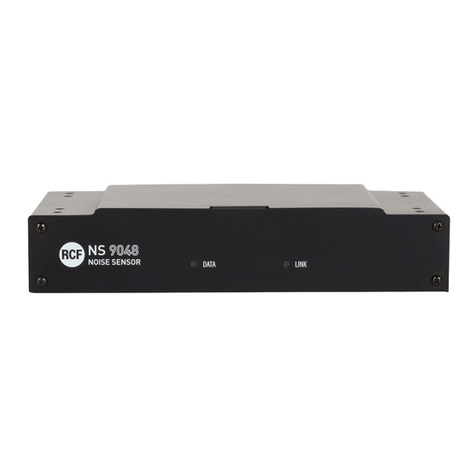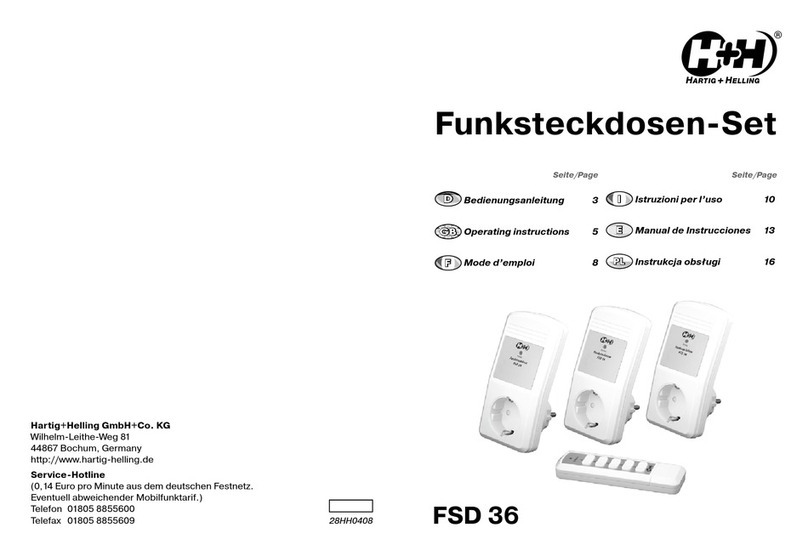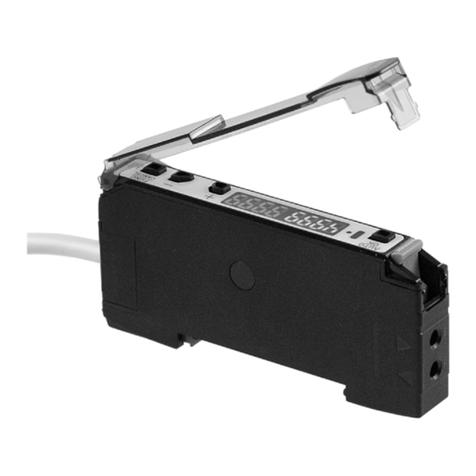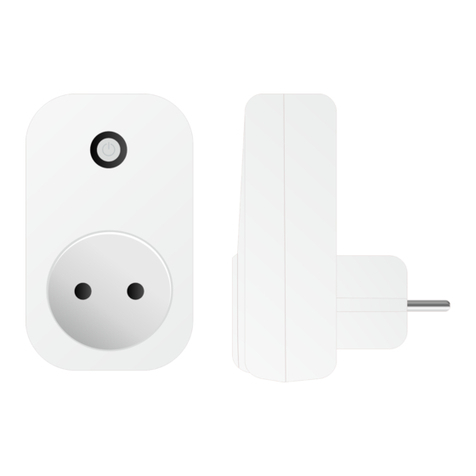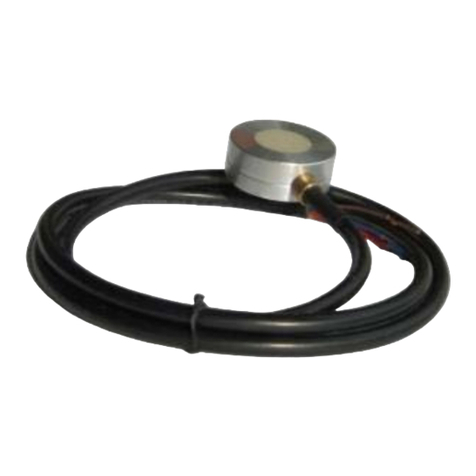Greystone Energy Systems NTRC Networking Series User manual

Page 1
INTRODUCTION
The network sensor is designed for use in environmental
monitoring and control systems where high performance and
stability are demanded. It's state-of-the-art design combines
digital linearization and temperature compensation with a highly
accurate and reliable thermoset polymer based capacitance
humidity sensor and curve-matched NTC thermistor temperature
sensor for reliability and accuracy in the most critical applications.
BEFORE INSTALLATION
Read these instructions carefully before installing and
commissioning the device. Failure to follow these instructions
may result in product damage. Do not use in an explosive or
hazardous environment, with combustible for ammable
gases, as a safety or emergency stop device or in any other
application where failure of the product could result in
personal injury. Take electrostatic discharge precautions
during installation and do not exceed the device ratings.
MOUNTING
The room type sensor installs directly on a standard electrical box and should be mounted ve feet from
the oor of the area to be controlled. Do not mount the sensor near doors, opening windows, supply air
diusers or other known air disturbances. Avoid areas where the detector is exposed to vibrations or rapid
temperature changes.
The cover is hooked to the base at the top edge and must be removed from the bottom edge rst. Use
a small Phillips screwdriver to loosen the security screw as shown in Figure 1. (Complete removal is not
required). Use a screw driver to carefully pry each bottom corner if necessary. Tip the cover away from the
base and sit it aside as shown in Figure 2.
Figure 1 Figure 2
IN-GE-NTRCXXX-01-02 03/19 Copyright © Greystone Energy Systems, Inc. All Rights Reserved Phone: +1 506 853 3057 Web: www.greystoneenergy.com
Network Sensor
NTRC Networking Series - Installation Instructions

Page 2
WIRING
• Deactivate the 24 Vac/dc power supply until all connections are made to the device to prevent
electrical shock or equipment damage. Follow proper electrostatic discharge (ESD) handling
procedures when installing the device or equipment damage may occur.
• Use 22 AWG shielded wiring for all connections and do not locate the device wires in the same
conduit with wiring used to supply inductive loads such as motors. Make all connections in
accordance with national and local codes.
• Connect the 24 Vac/dc power supply to the terminals labeled POWER and COMMON. Use caution if
24 Vac power is used and one side of the transformer is earth-grounded. See Figure 5.
• The transformer should NOT be connected to earth ground when using devices with RS-485 network
connections. The device is reverse voltage protected and will not operate if connected backwards.
• Connect the RS-485 network with twisted shielded pair to the terminals marked A(-), B(+) and
SHIELD.
• The positive wire connects to B(+) and the negative wire connects to A(-) and the cable shield must
be connected to the SHIELD terminal on each device. See Figure 5.
• If the device is installed at either end of an RS-485 network, an end-of-line (EOL) termination resistor
(121 ohm) should be installed in parallel to the A(-) and B(+) terminals.
• This device includes a network termination jumper and will connect the 121 ohm resistor correctly
on the PCB. Simply move the jumper to the EOL position and no external resistor is required. See
Figure 6.
The ground wire of the shielded pair should be connected to earth ground at the end of the network
and the master is not grounded. Do not run bus wiring in the same conduit as line voltage wiring or
other wiring that switches power to highly inductive loads such as contactors, coils or motors.
The PCB must be removed from the base to access the mounting holes. Follow usual anti-static procedures
when handling the PCB and be careful not to touch the sensors. The PCB is removed by pressing the
enclosure base to unsnap the latch near the bottom edge, then the PCB can be lifted out of the base as
shown in Figure 3.
Sit the PCB aside until the base is mounted on the wall. For added protection, place the PCB in the supplied
anti-static bag.
Mount the base by screwing it to an electrical box or directly to the wall as shown in Figure 4. The mounting
hole locations are shown on page 4.
After the base is screwed to an electrical box or the wall using the appropriate holes, remove the PCB from
the anti-static bag, feed connection wires through center hole and place the top of the PCB into the PCB
holders on the backplate and snap the bottom of the PCB into place as shown in Figure 4.
Make wire connections as per the Wiring Illustrations on Page 2 and install decorative cover by placing the
top of the cover into the cover holder on the top of the backplate and snapping the bottom into place ad
shown in Figure 4. Tighten security screw with a screwdriver.
Figure 3 Figure 4
Cover PCB Backplate
IN-GE-NTRCXXX-01-02 03/19 Copyright © Greystone Energy Systems, Inc. All Rights Reserved Phone: +1 506 853 3057 Web: www.greystoneenergy.com

Page 3
B+
A-
SHLD
PWR
COM
B+
A-
SHLD
PWR
COM
B+
A-
SHLD
PWR
COM
B+
A-
Shield
24 Vdc
Common
B+
A-
SHLD
PWR
COM
B+
A-
SHLD
PWR
COM
B+
A-
SHLD
PWR
COM
B+
A-
Shield
External 24 Vdc
Power Supply or
24 Vac Transformer
Common
Building Controller
Set EOL
Jumper
Building Controller
Connect Shield One End Only
Connect Shield One End Only
Device 2
Device 1 Device 3
Device 2
Device 1 Device 3
Figure 7
A network segment is a single shielded wire loop run between several devices (nodes) in a daisy
chain conguration. The total segment length should be less than 4000 feet (1220 meters) and the
maximum number of nodes on one segment is 127. Nodes are any device connected to the loop and
include controllers, repeaters and sensors such as this one but do not include the EOL terminators. To
install more than 127 devices, or to increase the network length, repeaters will be required for proper
communication. The maximum daisy chain length (segment) depends on transmission speed (baud
rate), wire size and number of nodes. If communication is slow or unreliable, it may be necessary to wire
two daisy chains to the controller with a repeater for each segment.
An optional signal is the relay output available on the RELAY terminals. The relay output is completely
isolated and has a Normally Open (NO) signal. This signal can be used to directly control an alarm or
ventilation fan. See Figure 7.
The optional D INPUT (digital input) signal accepts a dry-contact only with respect to COMMON and
registers in BACnet or Modbus. See Figure 8.
Figure 5
Figure 6 Figure 8
OFF
ON/EOL
COMMON
Digital Input
Power
Common
D. Input
Digital Output
Digital Output
N.O.
RELAY
IN-GE-NTRCXXX-01-02 03/19 Copyright © Greystone Energy Systems, Inc. All Rights Reserved Phone: +1 506 853 3057 Web: www.greystoneenergy.com

Page 4
USER MENU
To enter the menu, press and release the <MENU> key while in normal operation. This will enter the
Setup menu step 1, pressing the <MENU> key a second time advances to step 2. Each press of the
<MENU> key advances the menu item. No values are saved or changed by using the <MENU> key.
The <UP> and <DOWN> keys are used to make changes to program variables by scrolling through the
available options. When a value is changed, use the <SAVE> key to save it to memory and advance to
the next menu item. Actual menu displays with the default value are shown.
START-UP
Verify the transmitter is properly wired and connections are tight. Apply power and note that the LCD
will indicate the software version number and then the device will begin reading the sensor values and
display them on the LCD.
OPERATION
In normal operation the device reads the temperature and RH (if installed) sensors and updates
the object (BACnet) or register (Modbus) values accordingly. The LCD displays the sensor values as
determined by the display mode object for either temperature only, RH only, both or none. Temperature
units can be set to either C or F and the display resolution can be set also.
If the device has the optional Up/Down setpoint switches installed, pressing either the <UP> or
<DOWN> keys will cause the LCD to change to show the setpoint value. The first key press will display
the current setting of the Up/Down control for about 5 seconds and then revert back to the sensor
values again if neither the <UP> or <DOWN> keys are pressed again. To increase the setpoint, press
the <UP> key while the LCD is in setpoint mode and each press will increase the setpoint up to the
maximum value. To decrease the setpoint, press the <DOWN> key while the LCD is in setpoint mode
and each press will decrease the setpoint down to the minimum value. After 5 seconds of no key
activity, the display will revert back to normal and the new setpoint value will be saved.
The setpoint minimum and maximum values can be configured via the network as can the units for
either °C, °F or %RH values.
If the device has the optional Override switch installed, pressing the <OVERRIDE> key will cause the
Override object status to change and it can be reset via the network.
Network objects are available to control the OCC (occupied) LCD segment and the relay output.
If the optional Fan Speed switch is installed, and if the optional D input is installed, it's output setting
can be queried via a network object also.
Shorting the optional D Input terminal to COMMON will cause the DI BACnet object or Modbus register
status to change.
More details on the above features can be found in the following sections.
Figure 9
Power
common
D input
shield
b+
eol
rh t
0001363
Optional
Relay
Optional
RH Sensor
on off
Backlight
Jumper
End-Of-Line
Jumper
Optional
Fan Speed
Switch
22.5 c
down up save menu
backlight
relay
IN-GE-NTRCXXX-01-02 03/19 Copyright © Greystone Energy Systems, Inc. All Rights Reserved Phone: +1 506 853 3057 Web: www.greystoneenergy.com

Page 5
Use <UP> or <DOWN> to select a parity value of n (none), O (odd) or
E (even). The default Modbus parity bit is n (none). Press <SAVE> to
save the value.
Press <MENU> to save and advance.
Use <UP> or <DOWN> to set the stop bits to 1 or 2. The default
Modbus stop bits is 1.
5. Stop Bits
Press <MENU> to return to normal operation
Modbus Device Only
4. Parity
Press <MENU> to save and advance.
Use <UP> or <DOWN> to select a CRC value of 1 (A001 = CRC-16
reverse), 2 (1021 = CITT), 3 (8005 = CRC-16) or 4 (8408 = CITT reverse).
The default CRC is 1 (polynomial is 0XA001).
6. CRC
Press <MENU> to save and advance.
Use <UP> or <DOWN> to change the value from 0 (minimum) to 50,
100, 150, 200, 250, 300 or 350 ms. The factory default slave response
delay is 0 (minimum). Minimum delay means just more than 3.5
character time delays, 4ms for 9600 baud rate, for example.
7. Delay OCC
°F
Use <UP> or <DOWN> to select a baud rate of 30 (300), 60 (600), 120 (1200), 240
(2400), 480 (4800), 960 (9600), 192 (19200) or 384 (38400) for Modbus or 960 (9600),
192 (19200), 384 (38400) or 768 (76800) for BACnet. The default baud rate is 960
(9600). Press <SAVE> to save the setting and advance the menu.
Press <MENU> to save and advance.
3. Baud Rate
OCC
°F
1. Network Protocol
Use <UP> or <DOWN> to select either bAC (BACnet) or bUS (Modbus) protocol. Press <SAVE> to save
the value. The default is bAC (BACnet)
Press <MENU> to save and advance.
Press and release the <MENU> key to enter the SETUP menu
SETUP
%RH
°F°C
Press <UP> or <DOWN> to select a unique network address. It can be set from
1-255 for Modbus or from 0-127 for BACnet. The default address is 3. Press <SAVE>
to save the setting and advance the menu.
2. Network Address
Press <MENU> to save and advance.
%RH
OCC
IN-GE-NTRCXXX-01-02 03/19 Copyright © Greystone Energy Systems, Inc. All Rights Reserved Phone: +1 506 853 3057 Web: www.greystoneenergy.com

Page 6
SPECIFICATIONS
General Specications
Power Supply..................................20-28 Vac/dc (non-isolated half-wave rectied)
Consumption..................................35 mA max @ 24 Vdc
Protection Circuitry.......................Reverse voltage protected, overvoltage protected
Operating Conditions ..................0 to 50°C (32 to 122°F), 0 to 95 %RH non-condensing
Wiring Connections......................Screw terminal block (14 to 22 AWG)
Sensor Coverage Area..................100 m2 (1000 ft2) typical
Enclosure..........................................Wall mount enclosure, 84 mm W x 119 mm H x 29 mm D
(3.3" x 4.7" x 1.15")
Interface
Hardware..........................................2-wire RS-485
Software............................................Native Modbus or BACnet® MS/TP protocol
Baud Rate .........................................Locally set from 300 to 76800
Slave Address Range ....................Modbus: 1-255 (factory default is 3),
BACnet®: 0-127 (factory default is 3)
Locally Set (63 devices max on one daisy chain)
LCD Display
Resolution........................................0.5°/1°C or 0.5°/1°F (selectable), 1 %RH
Size......................................................38.1 mm W x 16.5 mm H (1.5" W x 0.65" H) 3 digit
Backlight...........................................Auto-dimming, enable or disable via jumper
Temperature Signal
Sensing Element............................10K thermistor, ±0.2°C (±0.4°F)
Range.................................................0 to 50°C (32 to 122°F)
Optional RH Signal
Sensor................................................Thermoset polymer based capacitive
Accuracy ...........................................±2 %RH
Range.................................................0 to 100 %RH, non- condensing
Resolution........................................1 %RH
Hysteresis .........................................±3 %RH
Response Time ...............................15 seconds typical
Stability .............................................±1.2 %RH typical @ 50 %RH in 5 years
Optional Relay Output
Contact Ratings..............................Form A contact (N.O.),
5 Amps @ 250 Vac, 5 Amps @ 30 Vdc for Resistive loads
2 Amps @ 250 Vac, 2 Amps @ 30 Vdc for Inductive loads
Relay Control...................................Via BACnet® or Modbus
Optional Override Switch...........Front panel push-button available via BACnet® or Modbus
Optional Setpoint Control..........Front panel push-button available via BACnet® or Modbus
Optional Fan Speed Switch........O, Auto, Low, Medium, High via BACnet® or Modbus
Digital Input Signal.......................Dry-contact only (relay contact), short to COMMON to activate
Country of Origin...........................Canada
IN-GE-NTRCXXX-01-02 03/19 Copyright © Greystone Energy Systems, Inc. All Rights Reserved Phone: +1 506 853 3057 Web: www.greystoneenergy.com

Page 7
PRINTED IN CANADA
BACnet® PROTOCOL
http://downloads.greystoneenergy.com/Website%20Documents/NTRC/SG-NTRCXXXBAC-01-01.pdf
MODBUS PROTOCOL
http://downloads.greystoneenergy.com/Website%20Documents/NTRC/SG-NTRCXXXMOD-01-01.pdf
NETWORK SETUP GUIDE
The network setup guide describes the implementation of the BACnet® for Modbus protocol. It is intended to assist control
system programmers who may need to add support to their systems to communicate with this device.
BACnet® and Modbus setup guide downloads are available online.
DIMENSIONS
84 mm
3.3“
119 mm
4.7“
29 mm
1.15 “
82.6 mm
3.25 “
58 mm
2.3 “
IN-GE-NTRCXXX-01-02 03/19 Copyright © Greystone Energy Systems, Inc. All Rights Reserved Phone: +1 506 853 3057 Web: www.greystoneenergy.com
Table of contents
Other Greystone Energy Systems Accessories manuals
Popular Accessories manuals by other brands
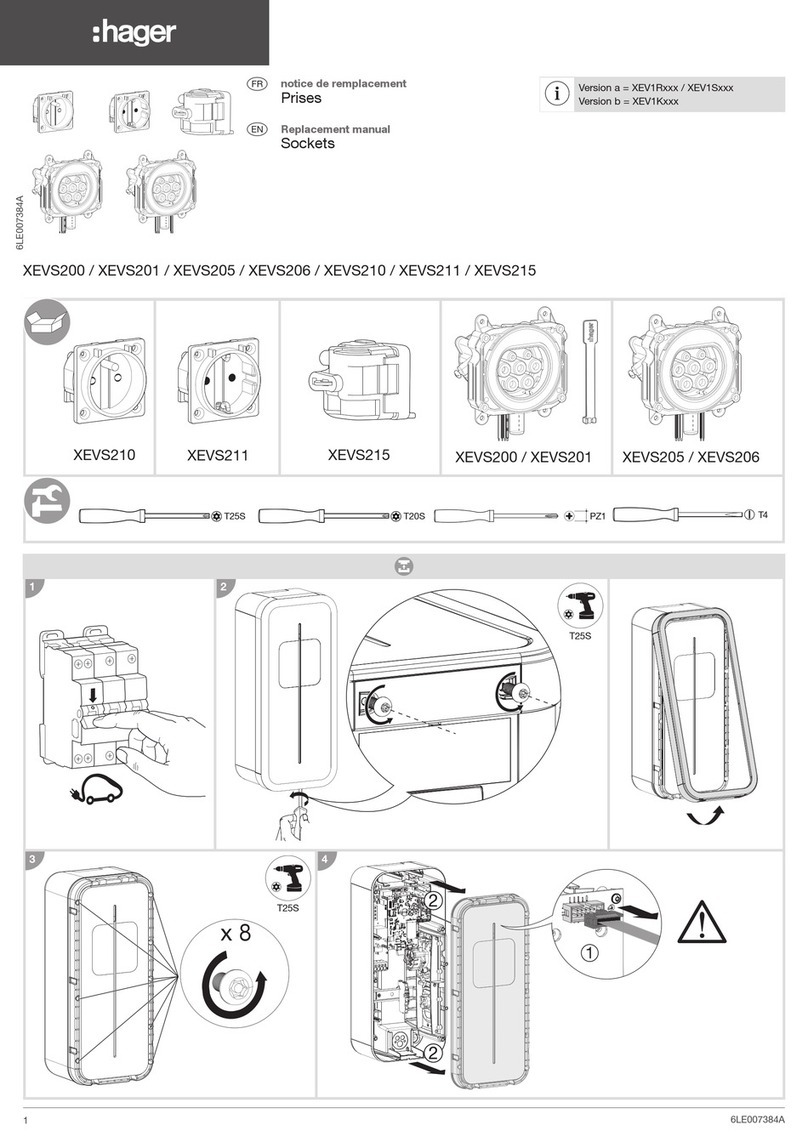
hager
hager XEVS200 Replacement manual
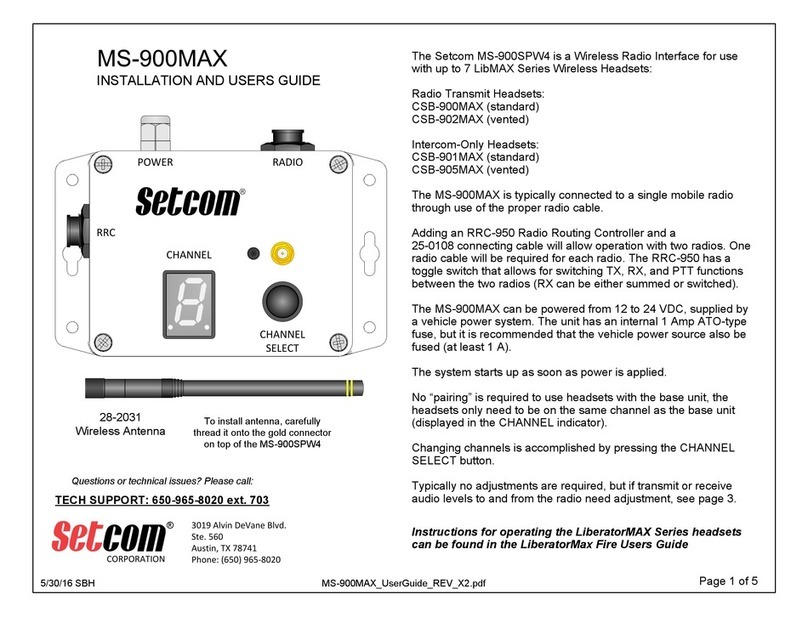
Setcom
Setcom MS-900MAX Installation and user guide
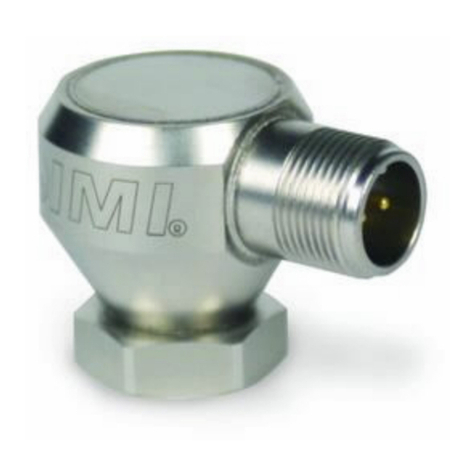
PCB Piezotronics
PCB Piezotronics IMI SENSORS 643A10 Installation and operating manual
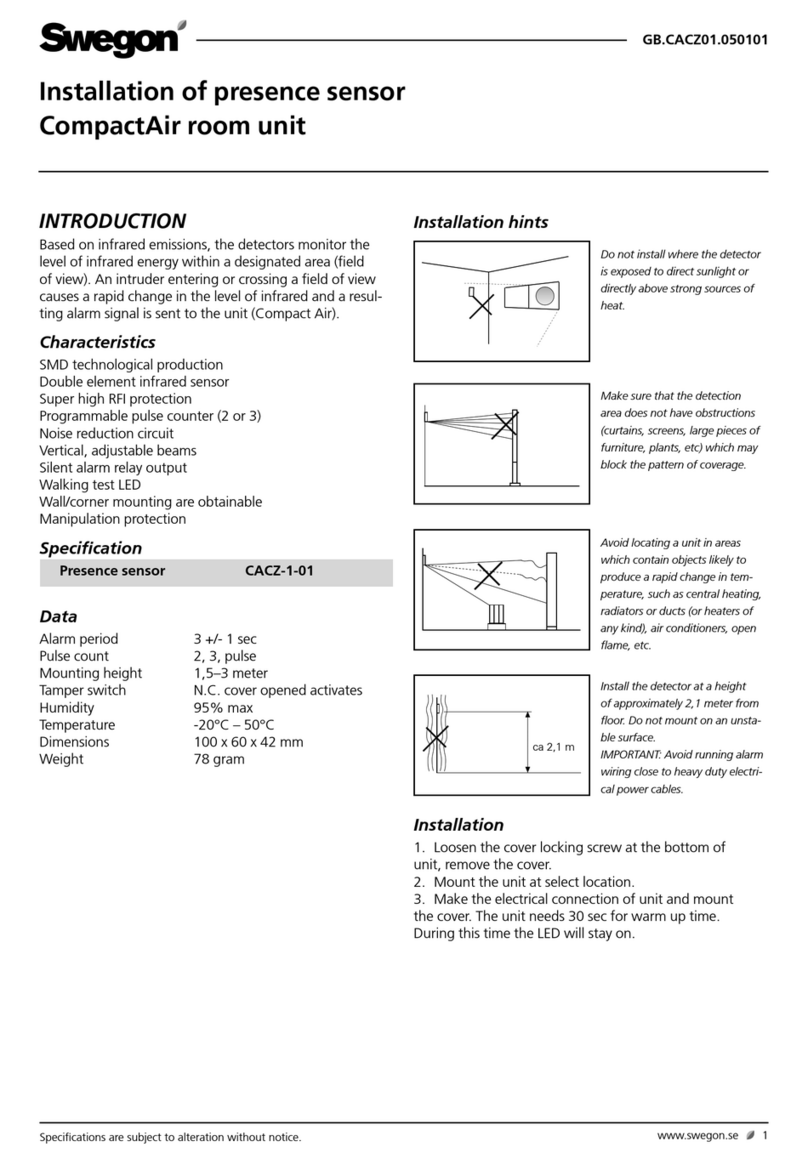
Swegon
Swegon CACZ-1-01 Installation
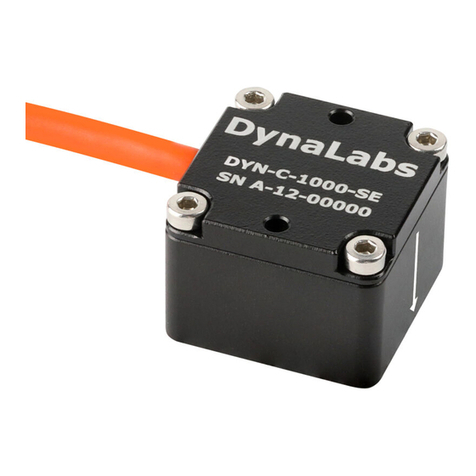
Dynalabs
Dynalabs DYN-C-1000-SE product manual
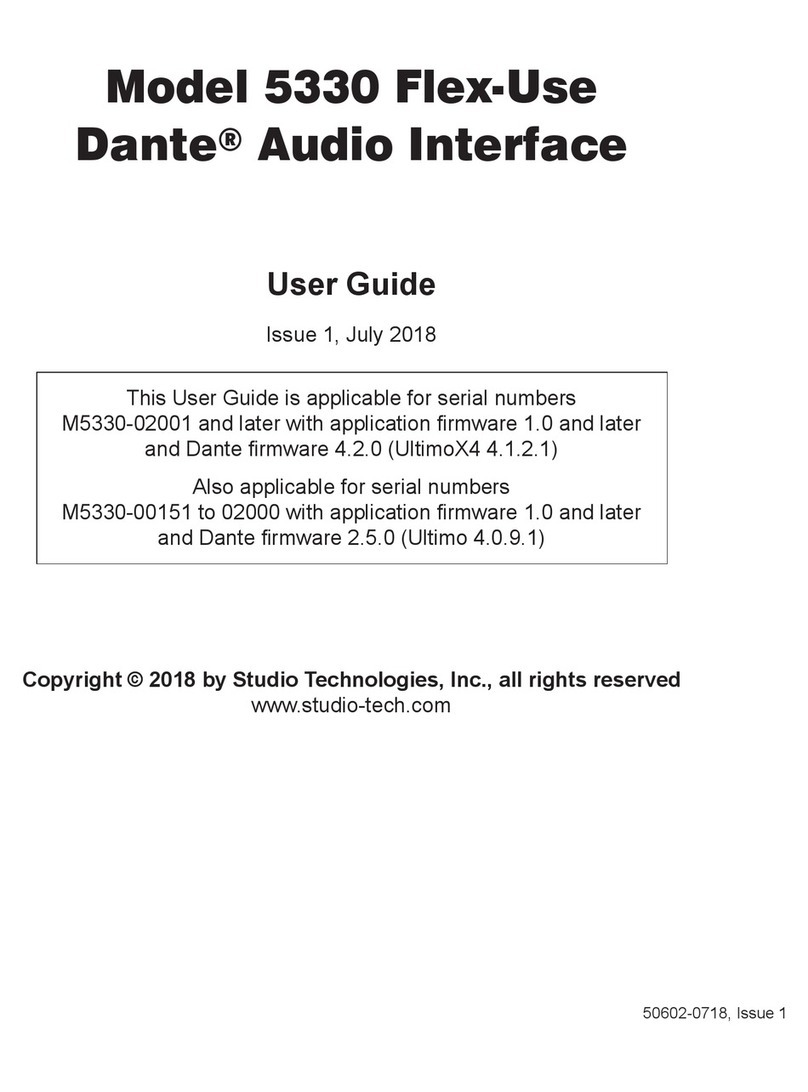
Studio Technologies
Studio Technologies Dante 5330 user guide
